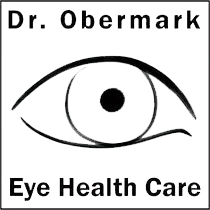Understanding Binocular Vision Dysfunction (BVD)

Ever feel like your eyes are working against each other instead of together? That persistent eye strain, those random dizzy spells, or the unexplained headaches after staring at a screen—all of it could point to a condition known as Binocular Vision Dysfunction (BVD) in Poplar Bluff MO and Sikeston MO. Surprisingly common and frequently misdiagnosed, BVD occurs when your eyes struggle to work as a coordinated pair.
At all of our Dr. Obermark Eye Health Care locations, we help individuals identify and manage BVD through personalized care. Many people live with the discomfort of BVD for years, attributing their symptoms to stress, sinus issues, or fatigue. The truth? It’s often a miscommunication between your eyes and your brain.
What Is Binocular Vision Dysfunction?
To see the world clearly, your eyes must work in perfect sync, sending nearly identical images to the brain for seamless merging. With BVD, however, those images don’t line up. One eye might be slightly higher, lower, or out of alignment with the other, causing the brain to overwork in an attempt to compensate.
This constant strain can trigger a range of frustrating symptoms, such as:
- Chronic headaches
- Double vision
- Light sensitivity
- Anxiety in busy environments
- Difficulty concentrating or reading
Imagine trying to walk while the ground keeps shifting beneath you. That’s what it feels like to live with uncorrected BVD.
Why BVD Matters More Than You Think
BVD isn't just about visual clarity—it’s about how your brain interprets the images your eyes deliver. When things are out of sync, everything from posture and balance to reading speed and focus can be affected.
For adults, this might mean frequent fatigue, neck pain, or trouble driving. For kids, BVD can interfere with classroom performance and sports, often getting mistaken for ADHD or learning disabilities. Early recognition is key to restoring focus—literally and figuratively.
Spotting the Symptoms of BVD
Not sure if what you’re feeling is vision-related? BVD can show up in many ways, depending on severity and visual demands. Here are some common signs to watch for:
- Frequent Headaches, especially after reading or screen use
- Eye Fatigue: Eyes feel tired even after short periods of focus
- Dizziness or Balance Issues: Difficulty in busy environments or while walking
- Reading Problems: Words seem to shift, blur, or double
- Motion Sensitivity: Trouble with escalators, car rides, or crowded spaces
- Anxiety or Discomfort in Visual Settings: Shopping malls, grocery aisles, or bright spaces can feel overwhelming
If you relate to more than one of these, it’s worth scheduling a detailed eye evaluation to see if BVD is at the root.
Leading Causes of Binocular Vision Dysfunction
BVD can be present from birth or develop later in life. Here are some of the most common contributing factors:
- Inherited Eye Muscle Imbalances: Minor misalignments can run in families
- Head Injuries or Concussions: Even mild trauma can disrupt visual alignment
- Undiagnosed Vision Issues: Conditions like myopia or astigmatism may amplify symptoms
- Physical or Mental Fatigue: High stress and lack of rest can worsen visual coordination
- Developmental Changes: Children and teens are more prone as their visual systems mature
Understanding your risk can help you take proactive steps. For example, athletes, students, or those with a history of concussion should be particularly mindful of symptoms.
Diagnosing BVD: What Sets It Apart from a Regular Eye Exam
Diagnosing BVD requires more than a basic vision screening. While most eye exams check for clarity and refractive errors, BVD testing evaluates how well your eyes function as a team.
During your visit, we’ll perform:
- Alignment Testing: Checks how your eyes move and focus together
- Eye Teaming Assessments: Measures convergence and divergence abilities
- Prism Evaluation: Determines if minor prisms can relieve symptoms
- Detailed Medical History Review: Identifies injury, stress, or other contributing factors
- Specialty Imaging: Advanced tools may be used to analyze tracking and coordination
This thorough, multi-layered approach helps us detect subtle misalignments that often go overlooked in standard exams.
How We Treat Binocular Vision Dysfunction
Treatment for BVD is highly personalized and designed to reduce strain, rebalance eye alignment, and improve visual comfort. Depending on the underlying cause and severity, your care plan may include:
Vision Therapy
Think of it like physical therapy—but for your eyes. These customized exercises help train your eyes and brain to work together more efficiently over time.Prism Lenses
Specialized glasses with built-in prism correction help align incoming images so your brain doesn’t have to struggle to merge them. Many patients experience immediate symptom relief with prism glasses.Lifestyle Adjustments
Small tweaks—like adjusting lighting, using ergonomic tools, or taking visual breaks—can significantly reduce symptoms during daily activities.Medications (If Needed)
If headaches or anxiety are tied to your symptoms, we may coordinate care with your primary provider to help manage side effects during treatment.Ongoing Monitoring
Your visual system changes over time. Regular follow-ups help us fine-tune your treatment and ensure your symptoms stay under control.
Why You Shouldn’t Ignore the Signs
Because BVD mimics other conditions, many people go years without a proper diagnosis, living with discomfort that’s entirely treatable. Whether you’re an adult struggling at work or a parent worried about your child’s reading abilities, addressing BVD early can drastically improve quality of life.
Find Relief From Binocular Vision Dysfunction Today
At Dr. Obermark Eye Health Care, we’re here to help you reclaim comfortable, clear vision—no more squinting, straining, or guessing your way through the day. If you’ve been struggling with symptoms that don’t add up, it may be time to consider a deeper look at your visual alignment.
Schedule your BVD consultation with our experienced team and take the first step toward relief. Clear, comfortable vision is just an exam away.



